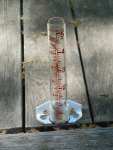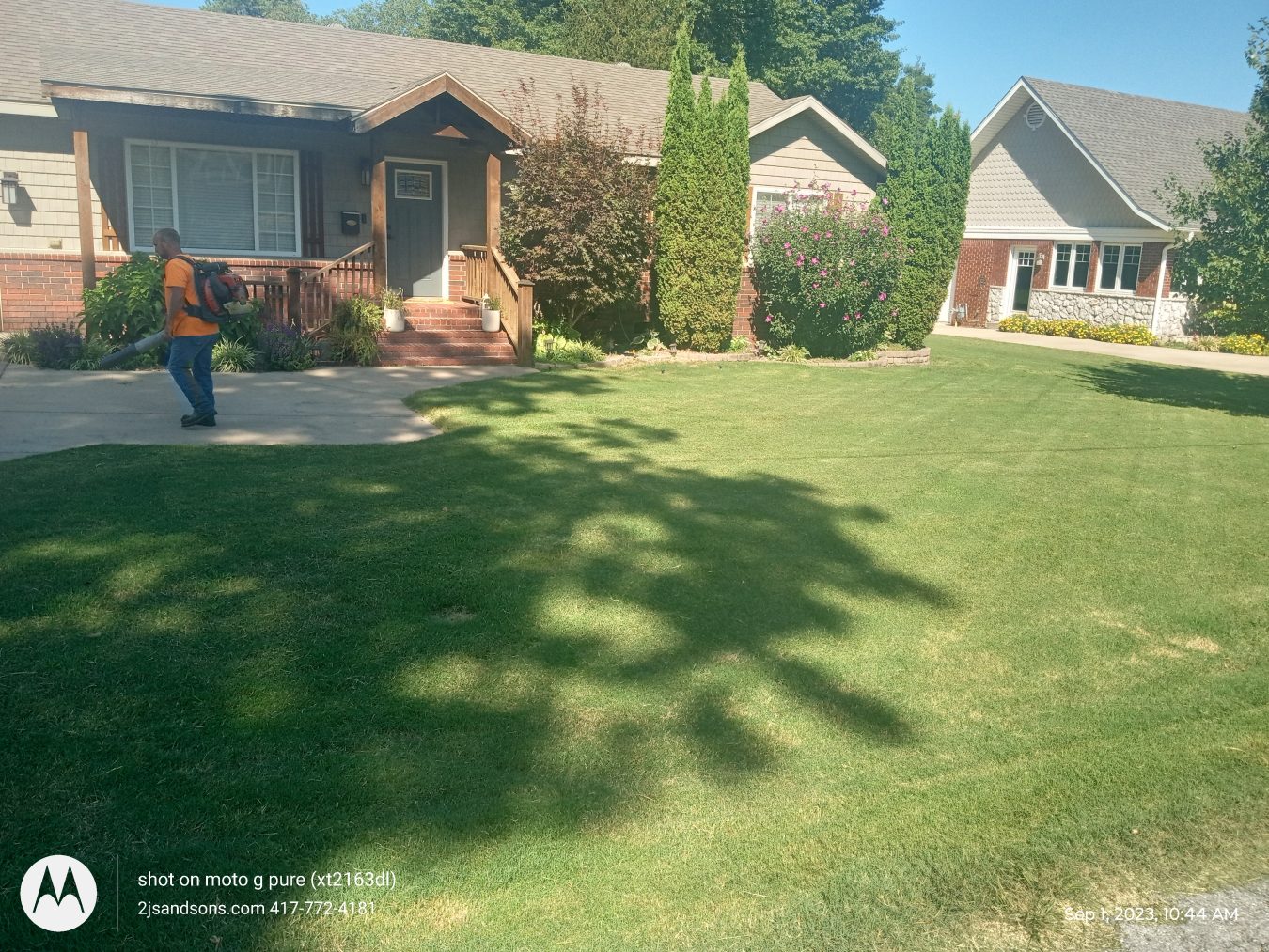Northwest Arkansas is a beautiful place to live. It can also be challenging to keep your lawn healthy and green in the Bentonville and Bella Vista AR areas. One of the most important aspects of lawn care is watering, and it’s especially important to do it right in this climate. Here are a few Northwest Arkansas lawn watering tips to help you keep your lawn watered properly.
Understanding Northwest Arkansas Weathers Impact On Ornamentals
In our region, transitioning from spring to summer means warmer temperatures. Our hilly terrain creates a potential shift in rainfall patterns. To achieve a vibrant lawn, it’s essential to adapt your watering strategy accordingly.
During the summer-to-fall transition, the gradual decrease in temperatures reduces the overall water requirements of your lawn. The cooler weather allows for less frequent watering sessions. focusing on maintaining soil moisture without the risk of overhydration. As winter approaches, the dormant period for most grass types begins. The need for watering decreases. It’s still important to remain attentive to potential dry spells. Adjusting your lawn watering schedule during these seasonal transitions is essential. for promoting the health and resilience of your lawn.
Monitor The Weather Forecast
Before reaching for the garden hose or irrigation control box, check the forecast. Avoid unnecessary watering if rain is expected. This helps prevent water waste and runoff. Promoting sustainable lawn care practices.
Rain Gauge Precision
For precise watering, invest in a rain gauge. While apps offer precipitation estimates. a physical gauge allows you to measure the exact water your lawn receives. Rain gauges don’t have to be fancy or expensive. Creating a makeshift gauge using a small old container is a great way to stay informed on your lawn or garden’s exact rainfall. Or these Acurite rain gauges from Amazon are under $10. Depending on your lawn budget rain gauges come in many different forms and prices. The most expensive come built into irrigation or can be added on later. Hunter makes great irrigation controllers and rain gauges.

How To Tell If Your Lawn Or Garden Needs More Water?
Each summer 2 J’s & Sons has at least one phone call from someone who is watering their lawn and does not understand why their front lawn looks brown. Attention to detail and routine visual inspections are important. Watch for a dull green color and footprints leaving lasting impressions. These signs indicate it’s time to hydrate your lawn promptly. You may be watering but not enough or at the right time.
Visual Signs Your Lawn and Garden Need More Water
Determining whether your lawn and garden are receiving adequate hydration is crucial for maintaining their health and vibrancy. Here are some key indicators that can help you assess watering needs:
Visual Inspection:
- Lawn: A healthy lawn should exhibit a lush, green color. If the grass appears dry, wilted, has curled leaves or has a blue-gray tinge, it’s a sign of insufficient water.
- Garden: Observe the overall appearance of your plants. Wilting leaves, drooping stems, and brown or yellowing foliage are all indications of water stress.
Soil Assessment:
- Finger Test: Insert your finger into the soil up to the second knuckle. If the soil feels dry and crumbly, it needs more water. If it sticks to your finger, the moisture level is adequate.
- Screwdriver Test: Push a screwdriver into the soil to a depth of 6 inches. If it encounters resistance, the soil is too dry. If it slides in easily, the moisture level is sufficient. Be careful of rocks this is Northwest AR.
- Moisture Meter: For a more precise measurement, use a soil moisture meter. This device measures the electrical resistance of the soil, which correlates with its moisture content. You can grab one pretty cheap at the local garden supply store. Be careful to not damage the probe on rocks.
When Is The Best Time To Water The Lawn or Garden In Northwest Arkansas
Timing matters when it comes to watering your lawn in Northwest Arkansas. Water must reach the plant roots. Water at the wrong time and the water will evaporate before it has time to soak down to the roots. 2 J’s & Sons recommends watering your lawn and garden either in the early morning or in the evening after 6 PM.
when you water is important but not as important as how long you water for.
2 J’s & Sons owner Jeff used to water his lawn around 7 PM. Since he has installed irrigation he now waters about 7 AM. Jeff stresses that when you water is important but not as important as how long you water for. Watering the lawn or garden should not affect indoor water use. Running water indoors at the same time the lawn is being watered can affect water pressure. Lower water pressure can change how far the sprinklers spray. Consider the following when planning your lawn or garden watering schedule:
Early Morning (6 a.m. to 10 a.m.)
- Less wind and lower evaporation rates.
- Even water distribution for optimal absorption.
- Ideal for preventing heat stress during the hottest part of the day.
2. Evening (4 p.m. to 7 p.m.)
- Convenient for those with busy schedules.
- Be cautious in humid climates to avoid potential mildew and fungus issues.
3. Golden Ticket Lawn Watering Time in Humid Climates (6 p.m. to 10 a.m.)
- Recommended by experts for optimal water absorption.
- Timers and irrigation systems can streamline this schedule.
- Do NOT Water: during the hottest time of the day.
2 J’s & Sons Pro Lawn Watering Tip: Invest In An Irrigation Controller or Hose Timer
Control your watering schedule with timers. Lawn and garden timers come hardwired or battery-operated. Timers conserve water and ensure your lawn receives the right amount of hydration. So lawn and garden enthusiasts don’t have to remember to manually turn on and off the outdoor water. Timers help ensure that your lawn and garden plants get watered no matter how busy you are.
Duration of Watering
Factors like water pressure, soil composition, and grass type influence the duration of watering. Use a soil probe to measure moisture and tailor your watering regimen to your lawn’s unique needs. But how long to water your lawn is a whole new subject.
Nurturing Healthy Roots
Deep, infrequent watering is the secret to robust grass roots. Avoid shallow daily watering. It makes grass more susceptible to diseases and unable to withstand foot traffic. Water grass deep enough to promote root growth and depth.
Adapting Lawn Watering to Lawn Activity
High-traffic lawns may require additional watering. Adjust your schedule to accommodate increased activity, ensuring your grass remains green and healthy.
2 J’s & Sons Lawn and Landscape: The benefits of watering your yard in the early morning:
- The water has more time to soak into the soil.
- The water will not evaporate as quickly.
- The plants will have time to absorb the water before the sun comes up and dries them out.
- The cooler temperatures will help to reduce stress on the plants.
